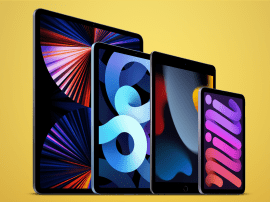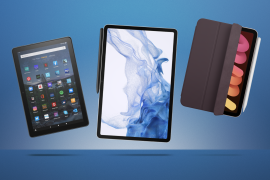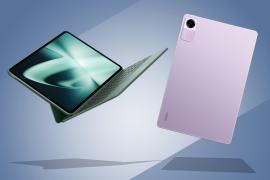The OnePlus Pad Lite is exactly where I’d start shopping for a budget Android tablet
Streamlined software and a big battery count for a lot when value is your top priority
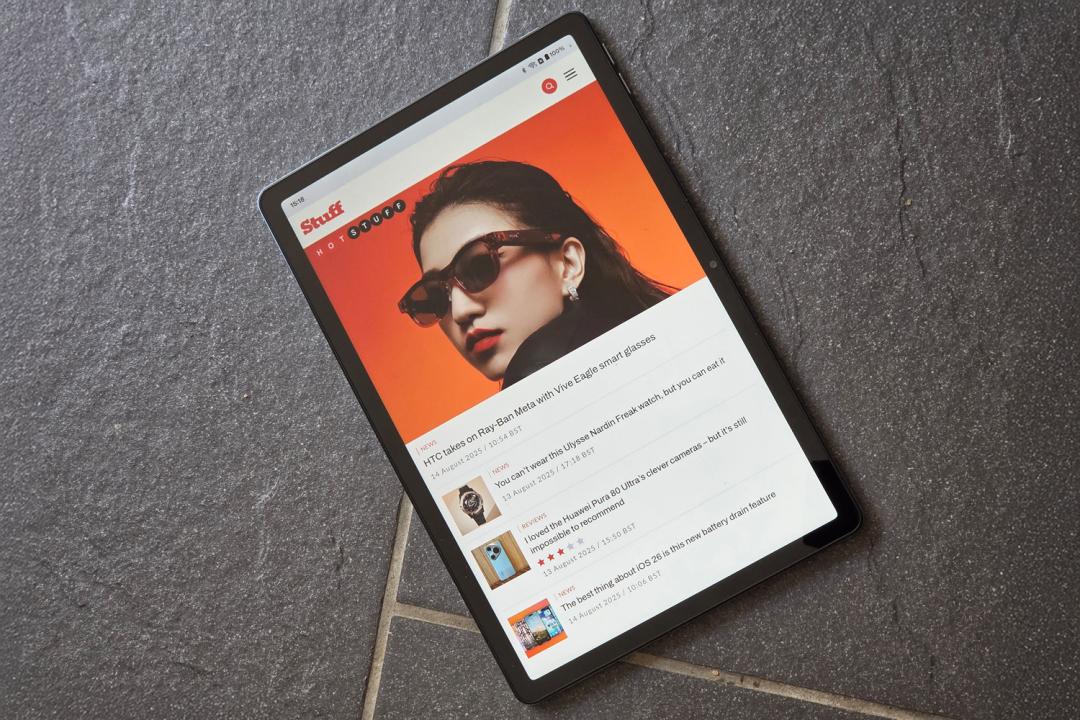
Stuff Verdict
Performance might be modest, but the OnePlus Pad Lite is otherwise a well-rounded tablet at a very appealing price.
Pros
- Big screen with smooth scrolling
- Long-lasting battery, particularly on standby
- Clean take on Android with useful multitasking
Cons
- Lacks the oomph of pricier tabs
- Not the sharpest or brightest budget tablet display
- A little on the heavy side, funnily enough
Introduction
With Apple all but dominating the spicier end of the tablet price spectrum and a few recognisable Android brands duking it out in the mid-range, the more affordable territory has become a bit of a wild west. A quick scroll through Amazon throws up dozens of no-name slates for very little cash, running older versions of Android and archaic hardware. The OnePlus Pad Lite is the antidote to all of that.
Arriving at £199 (there’s no US launch planned currently), this 11in tablet brings a big battery, streamlined software, and an update promise that won’t leave you marooned on an outdated OS mere months after clicking the buy button. It’ll run all your apps without any fuss, too – unlike an Amazon Fire Tablet.
There are a few shortcuts and shortcomings to keep costs in check, sure – but I still walked away from a week of testing impressed by how much value you’re getting.
How we test tablets
Every tablet reviewed on Stuff is used as our main device throughout the testing process. We use industry-standard benchmarks and tests, as well as our own years of experience, to judge general performance, battery life, display, sound and camera image quality. Manufacturers have no visibility on reviews before they appear online, and we never accept payment to feature products.
Find out more about how we test and rate products.
Design & build: test of metal
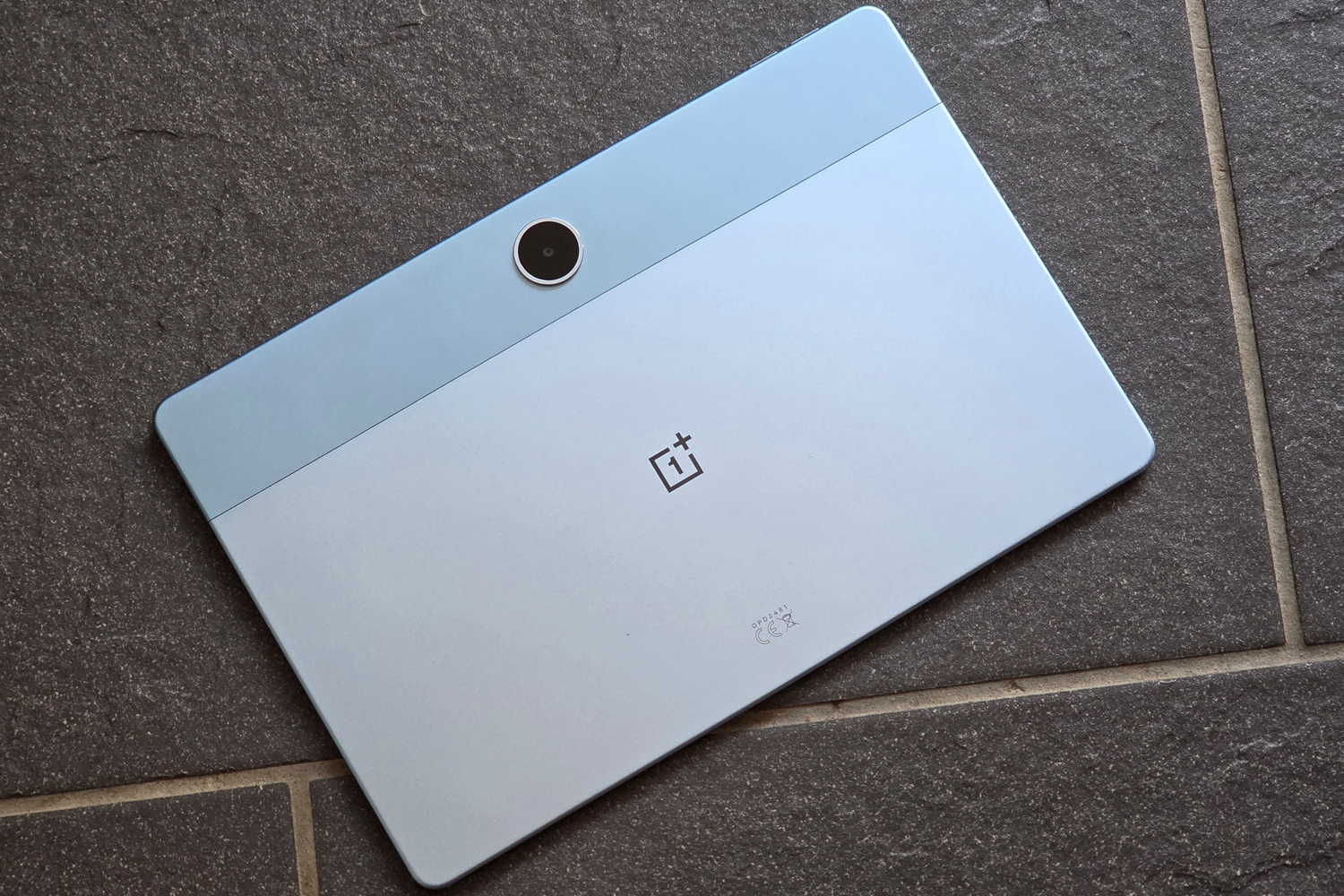
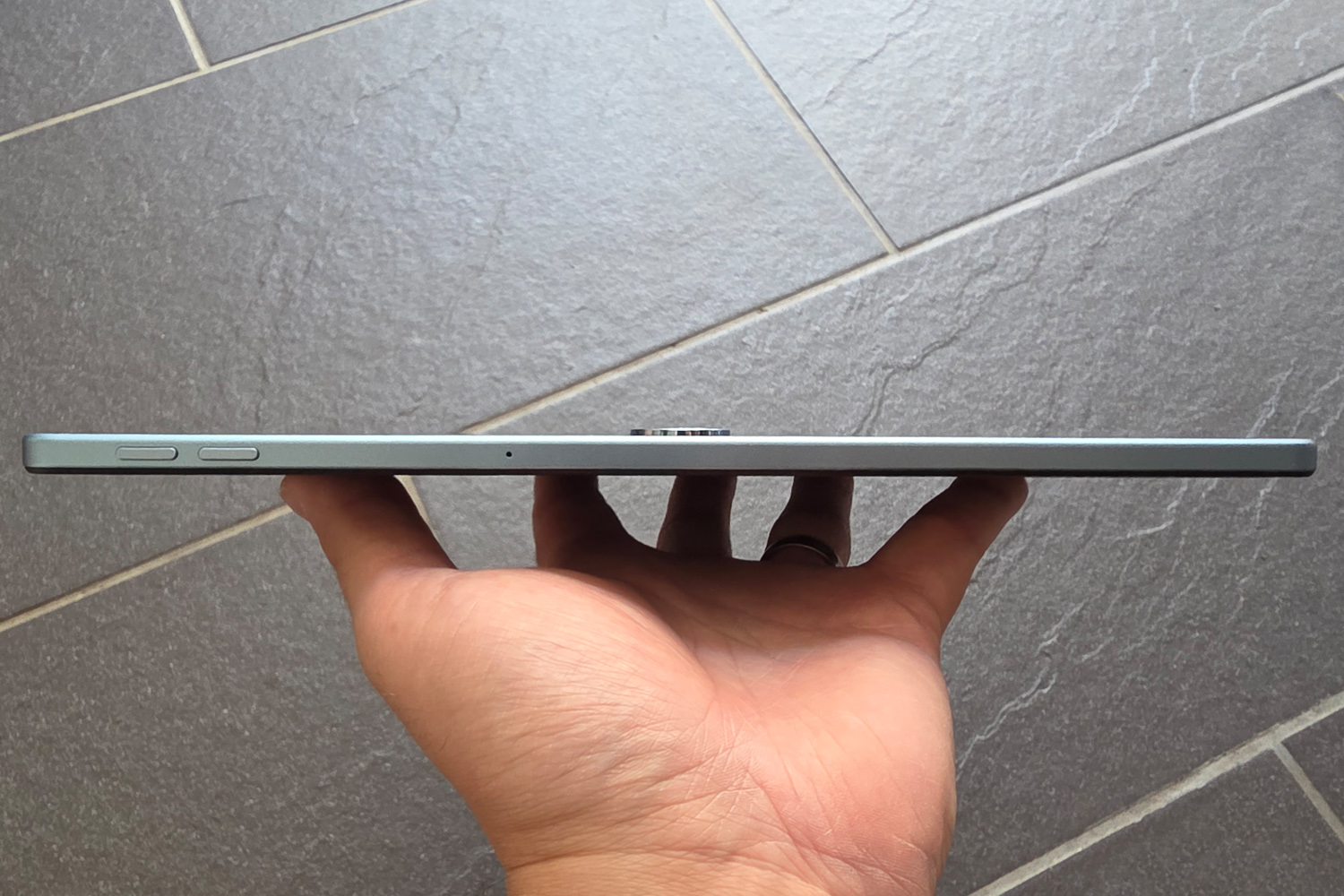
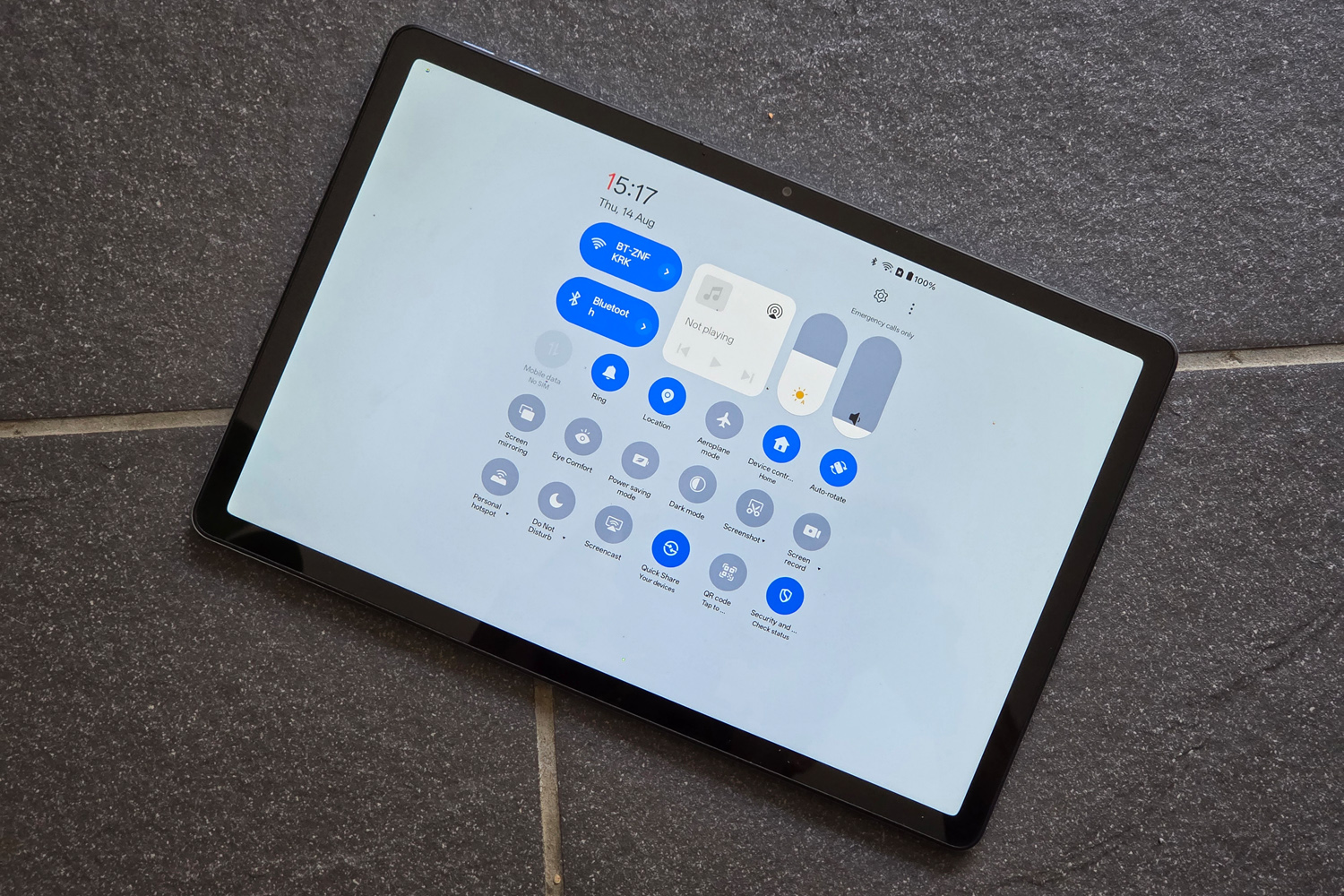
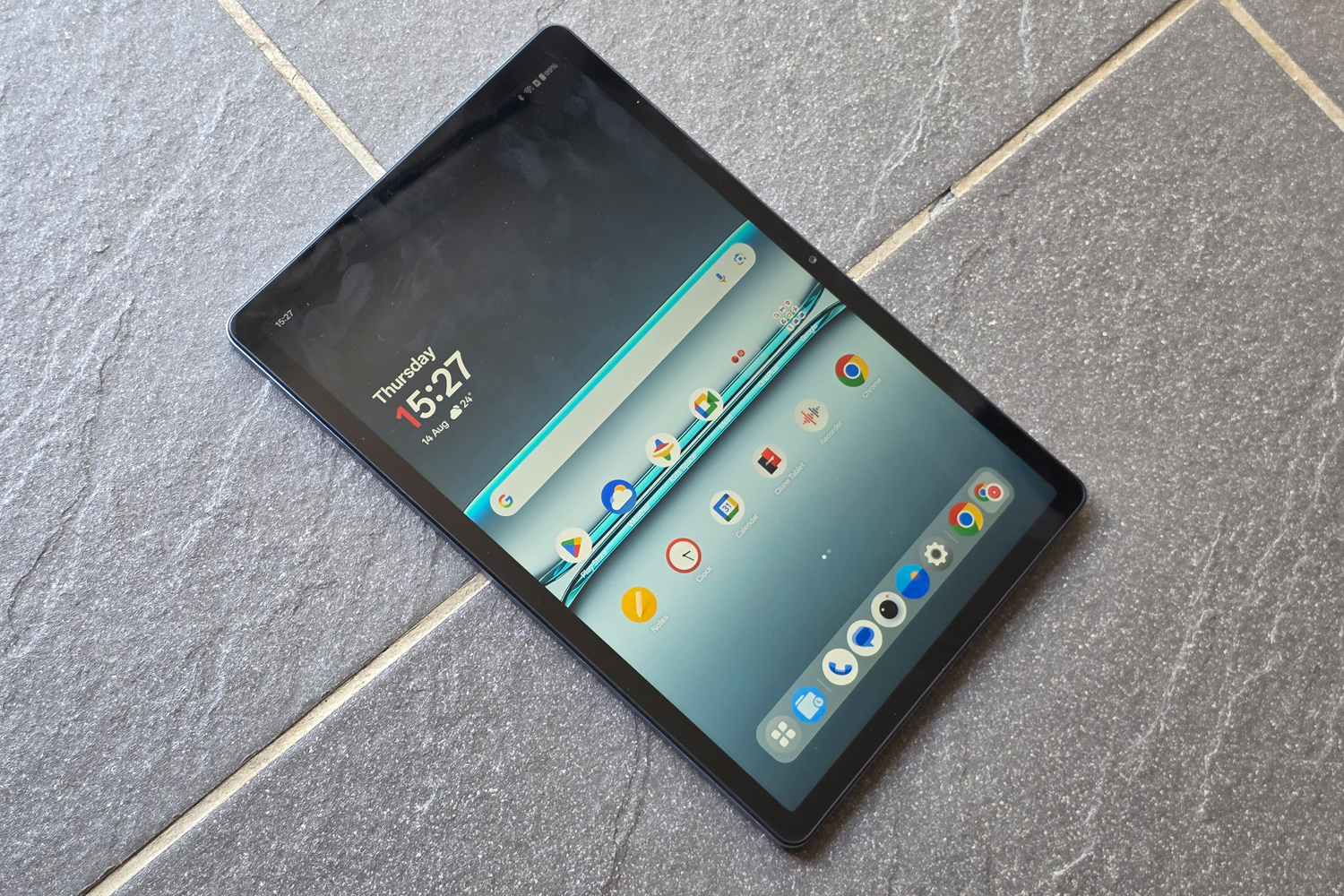
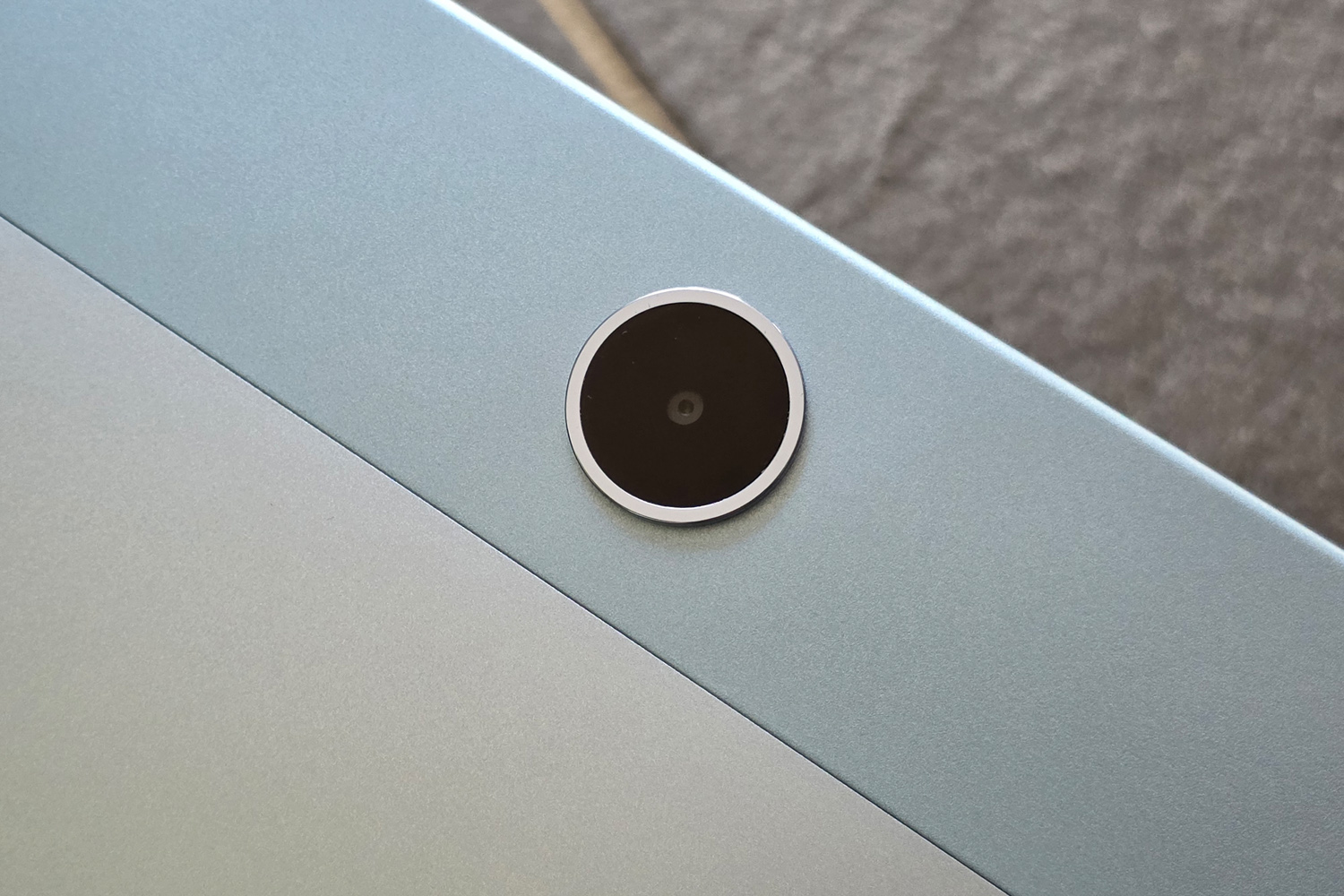
Plenty of budget tablets are still made from cheap-feeling polycarbonate plastic, so the OnePlus Pad Lite’s all-aluminium build feels positively luxurious in comparison. It’s only available in a single colour, Aero Blue, but I’m a fan of its distinctive appearance and fingerprint-busting matte finish.
This Pad is Lite only in name, weighing a substantial 530g. I didn’t find it uncomfortable to hold one-handed for short stints, but wouldn’t fancy trying to read an ebook from cover to cover in a single sitting.
IP42 resistance might not sound like much to shout about, but an IP rating of any kind is pretty rare at this price. Basically it’s not a disaster if you leave it on the patio table during a brief rain shower.
The flat sides are in keeping with the newer, high-end OnePlus Pad 3, but the single central camera lens at the rear more closely mimics the look of the original Pad and Pad 2. There’s also a 5MP webcam squeezed into the display bezel up front. Don’t expect brilliant results from either: my test snaps were lacking in detail and colours leaned overly cool. Still, they’ll do in a pinch for document scanning or video calls.
Other telltale signs this is an affordable slate include the slightly chunkier screen bezels, and lack of fingerprint sensor. You do at least get basic facial recognition, so can avoid having to put in a PIN or password every time you go to unlock the tablet. There’s no microSD expansion or stylus support, either, but impressively OnePlus does offer LTE connectivity; a lot of tablets are just Wi-Fi only at this price point. You’ve got to pay a little extra, but £229 is still very keen – and you get a bump to 8GB of memory in the process.
Screen & sound: fits the bill
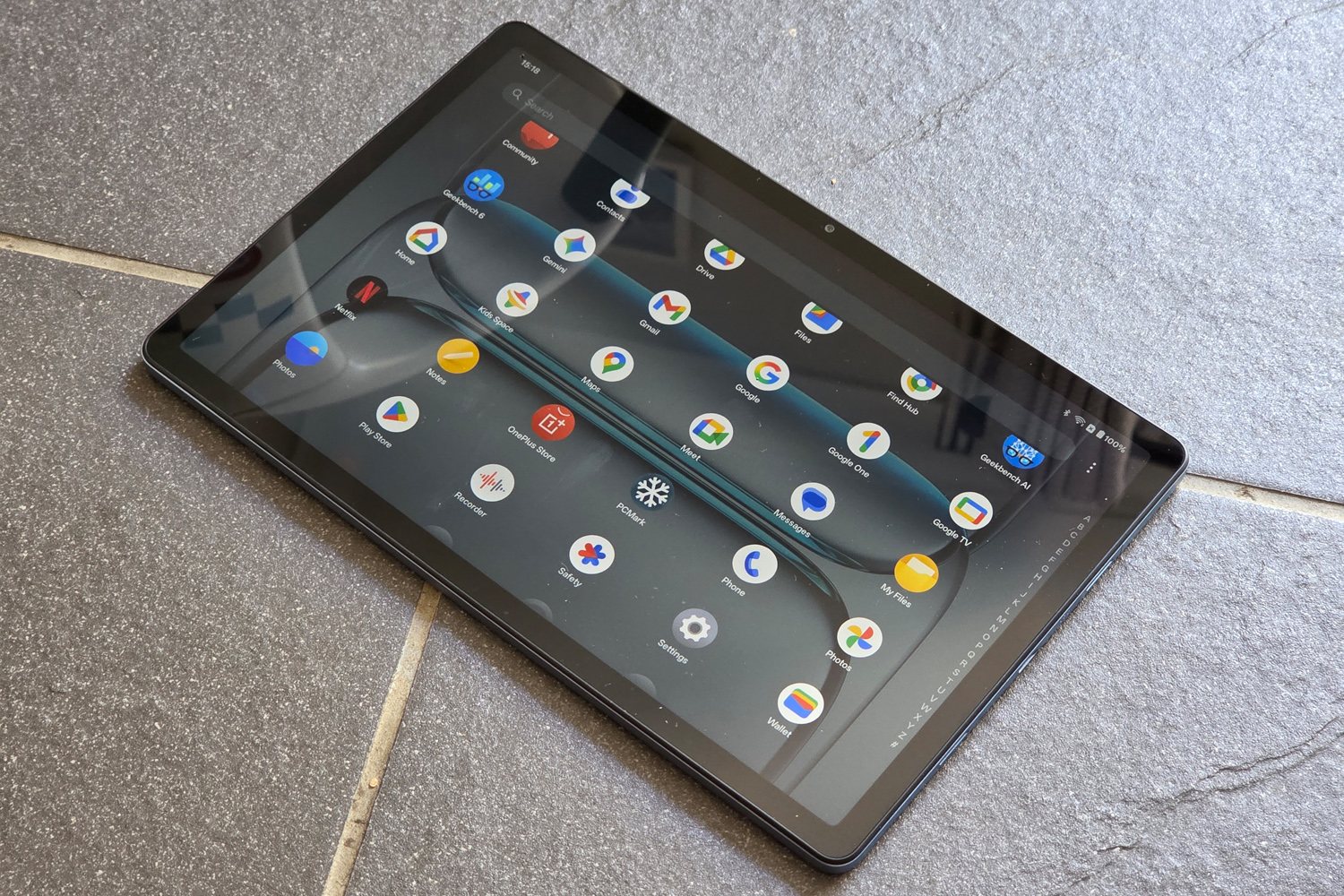
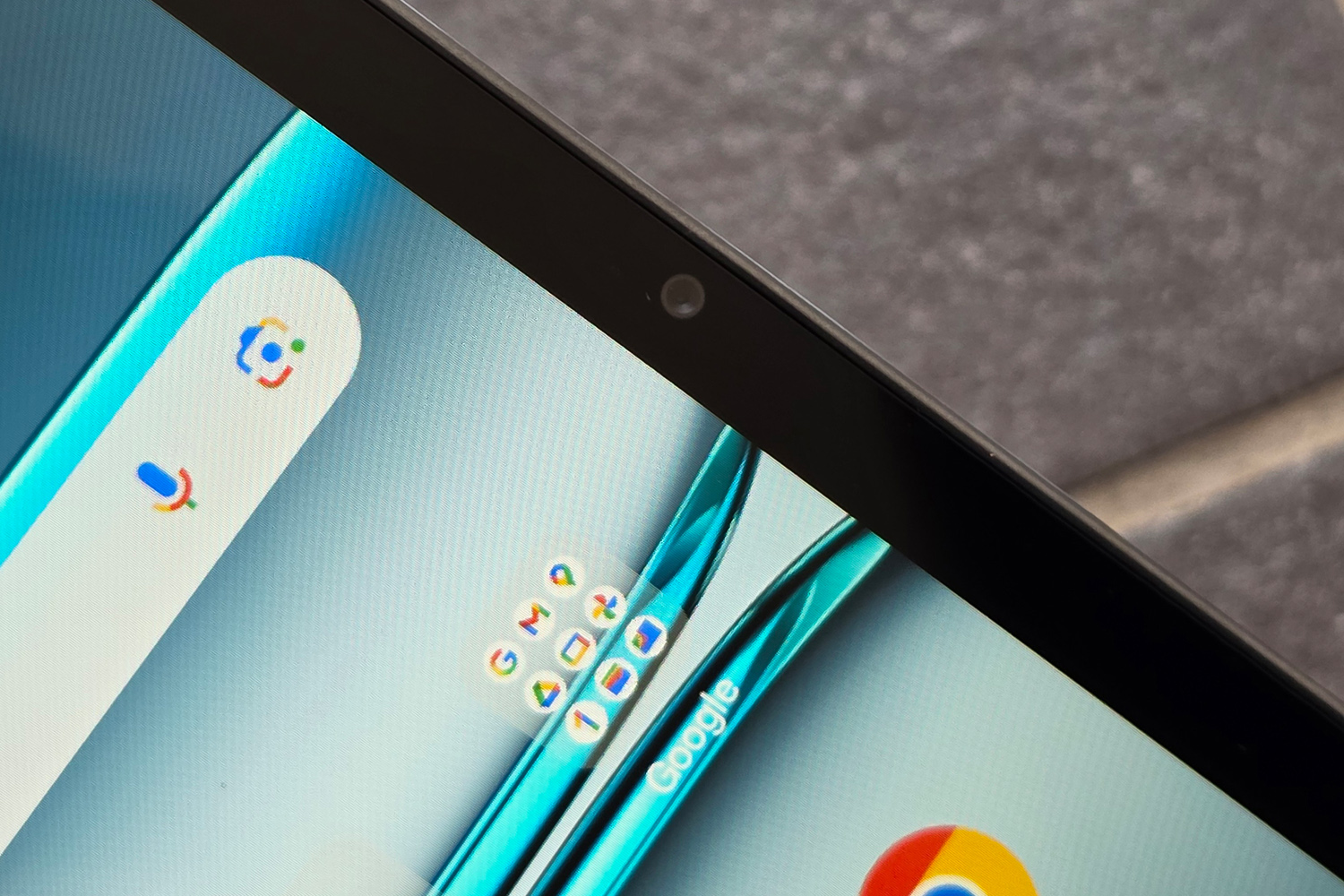
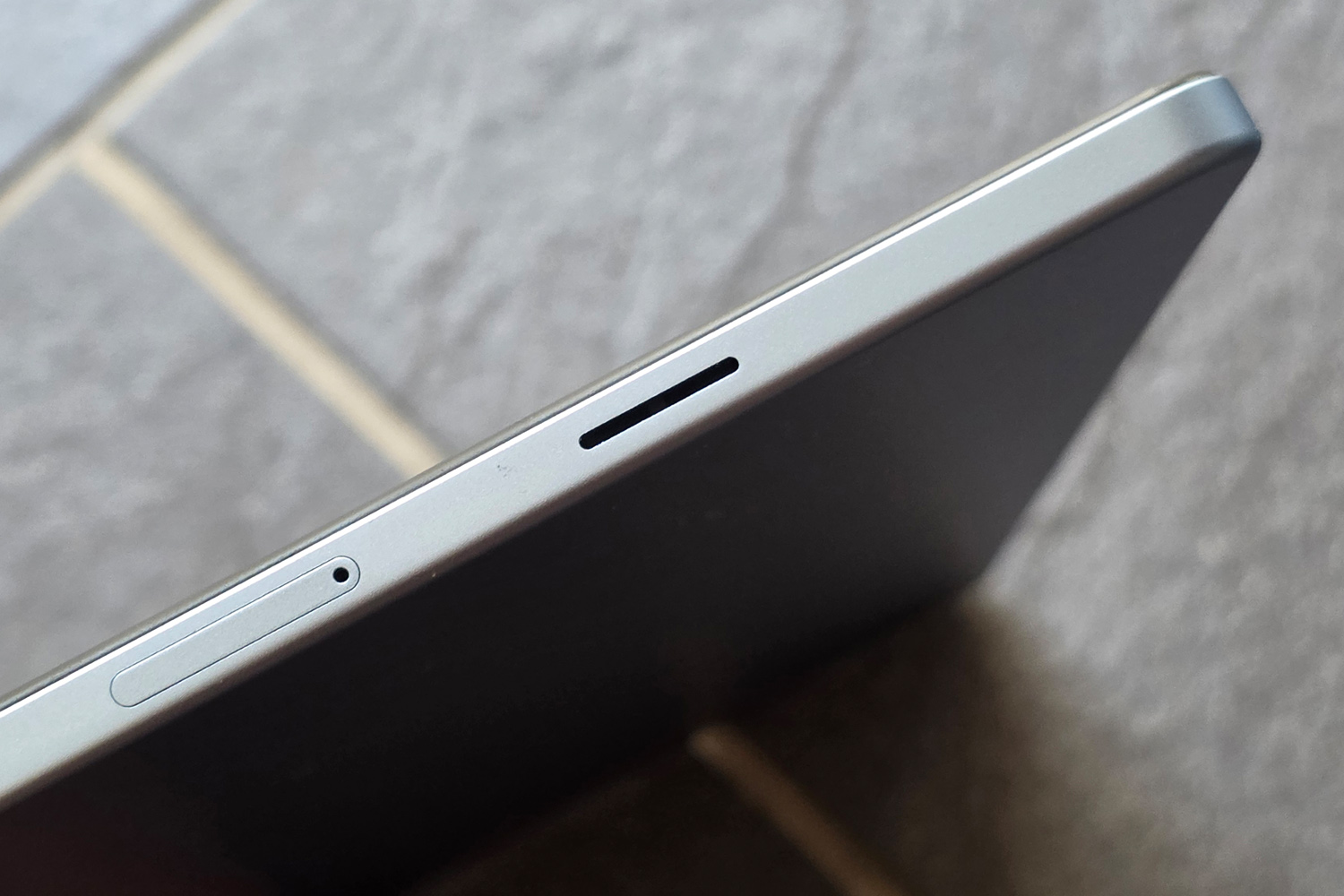
With a multimedia-friendly 16:10 aspect ratio, the OnePlus Pad Lite’s 11in display is a natural fit for streaming video. While some rivals have higher resolutions, they typically also have lower refresh rates: you’re getting smoother 90Hz scrolling here, and the 1920×1200 panel doesn’t look majorly blocky or lacking in detail. Especially small text could stand to look a little crisper, but images are still well defined.
Brightness in general is OK, getting pretty close to OnePlus’ 500 nits peak claim. That’s fine for indoor use, but I struggled a bit when stepping outside on a particularly sunny day.
Contrast isn’t too shabby and black levels look pretty good, given the panel is using LCD tech. Viewing angles are merely OK, and colour vibrancy is perhaps just a little lacking, with no alternate profiles to swap to in the settings menus – just basic warm and cool temperatures. Pump up the brightness a bit and things still look impactful enough. It comfortably holds up against rivals costing similar cash.
The stereo speakers are a great match to the screen, getting plenty loud and with a good amount of separation. Having the grilles on the tablet’s two shorter edges makes them a bit too easy to block while holding it in landscape, but adjust your positioning and you’ll be happy enough with the clean and full-bodied (for a tablet) audio.
Software experience: the simple approach
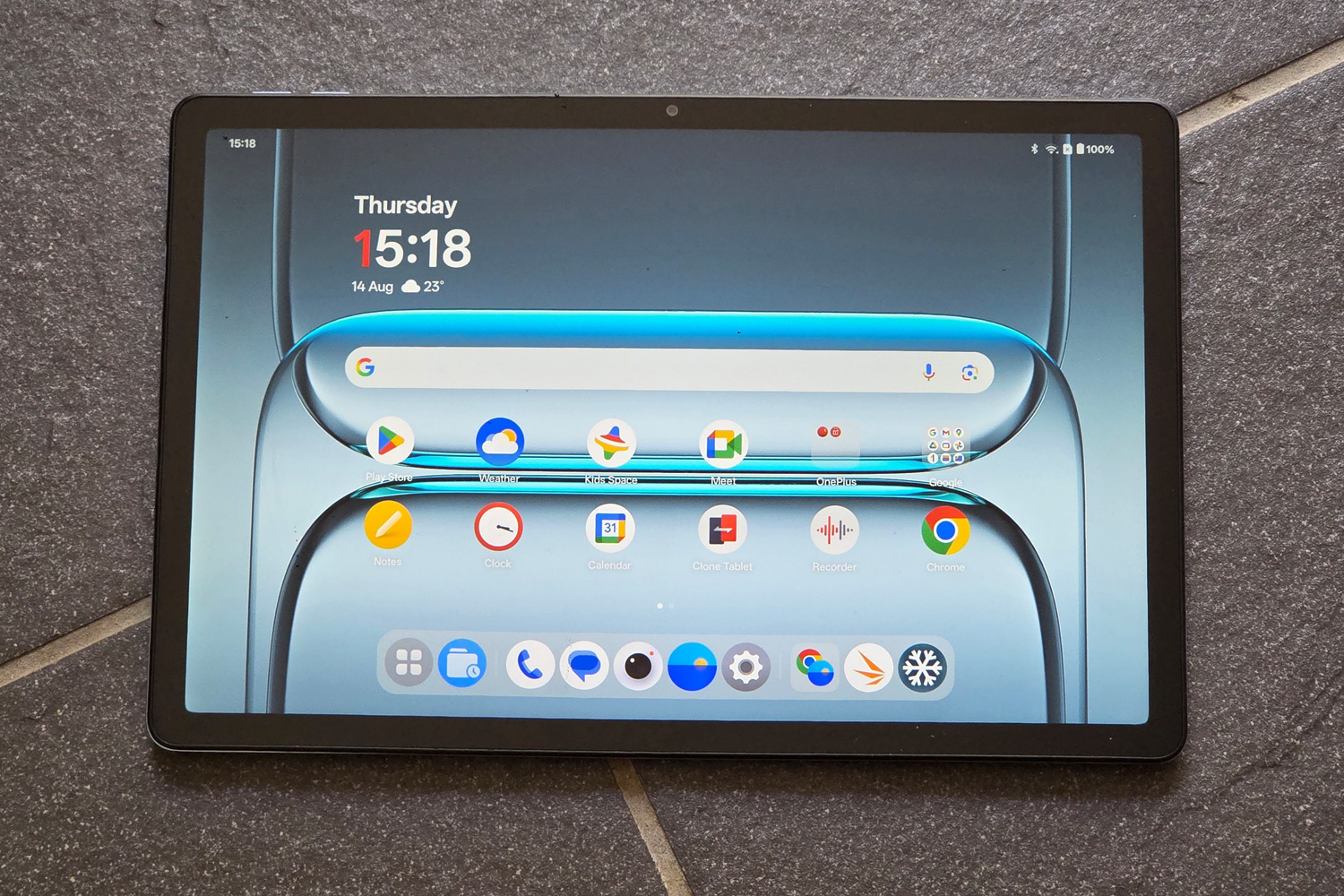
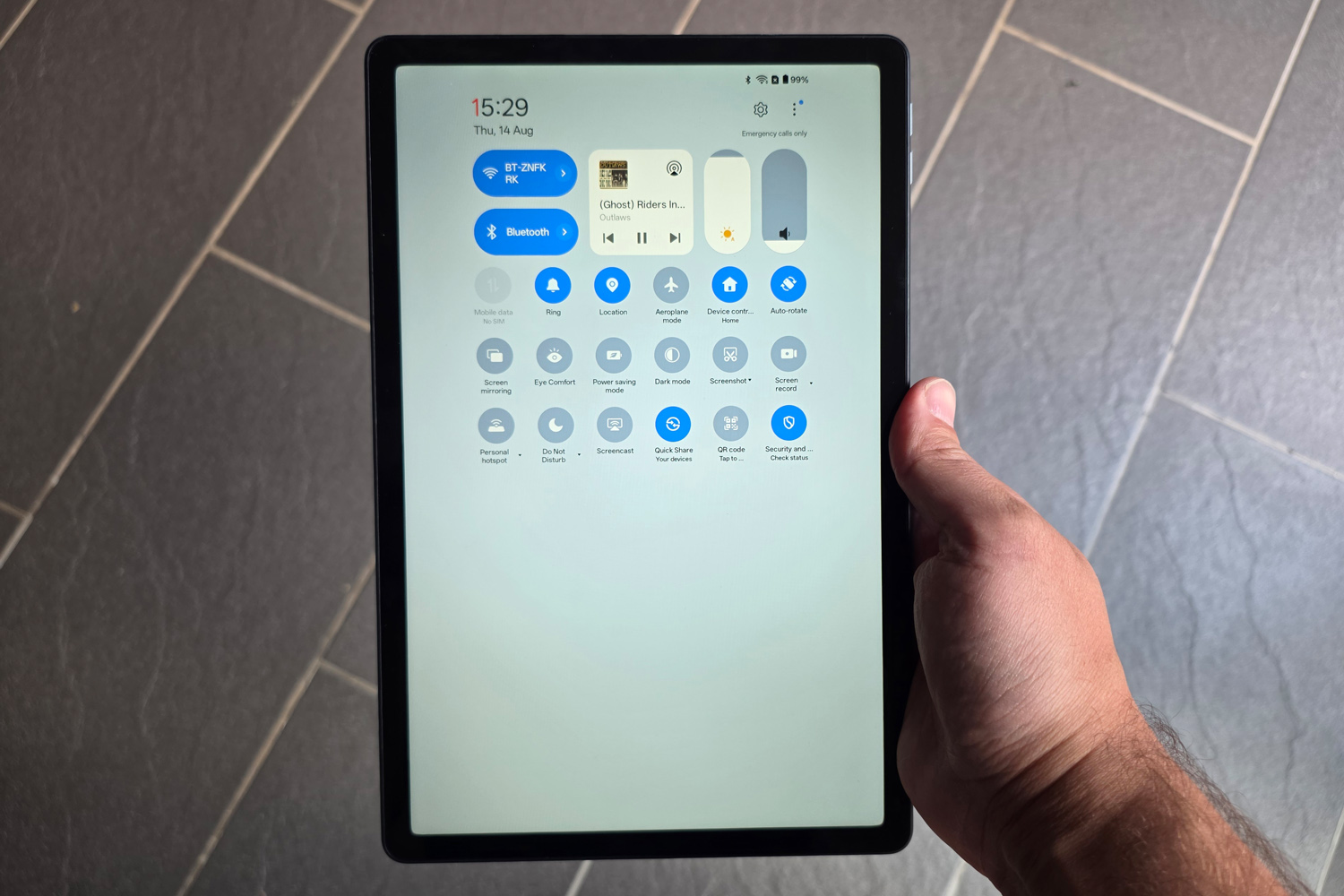
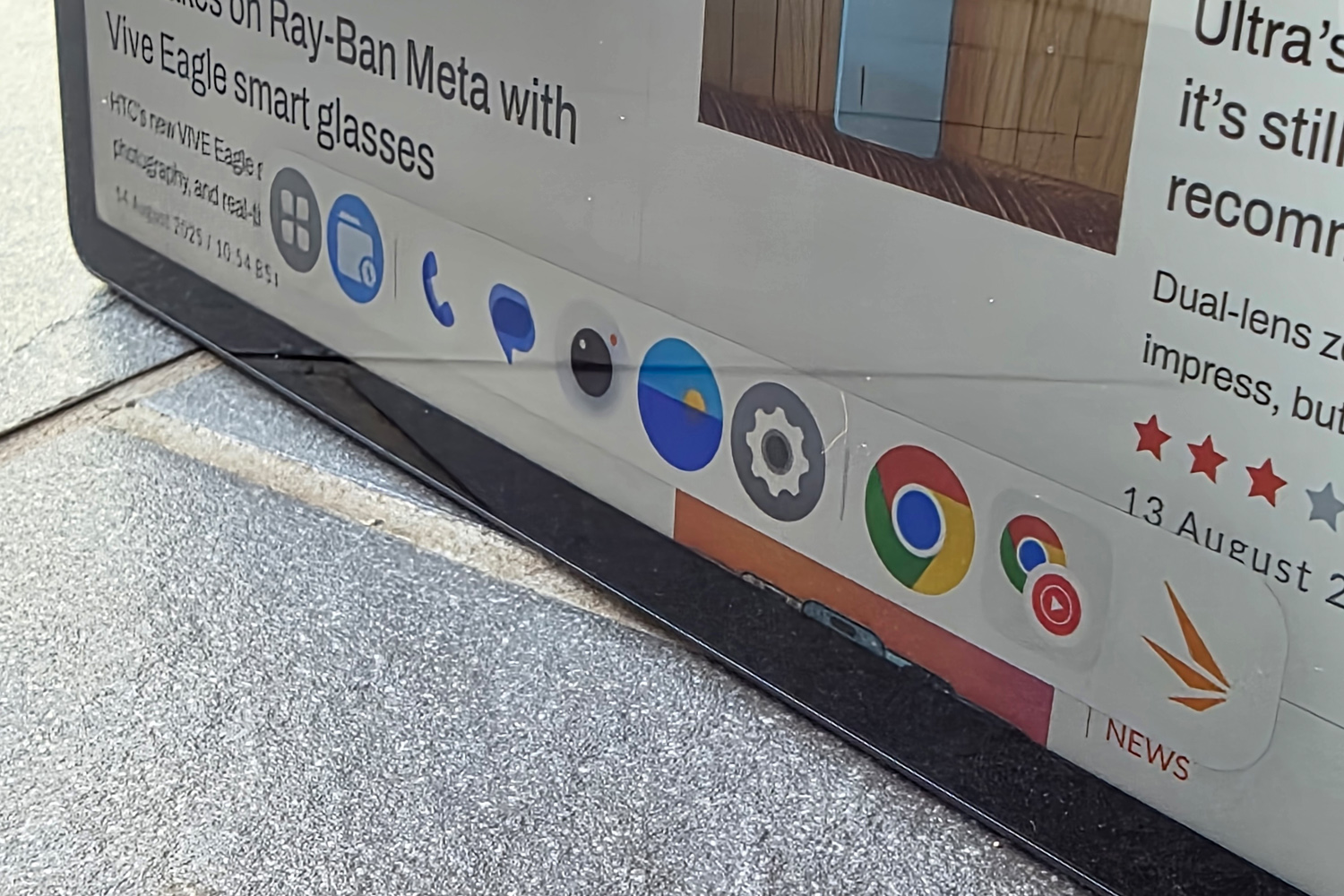
A lot of budget tablets overload their versions of Android with bloatware, earning a kickback from the app developer to offset the low hardware price. Fair play to OnePlus for not going down the same route: the Pad Lite has zero bloat out of the box, which makes handing it over to a less tech-savvy relative far more straightforward.
It helps that OxygenOS is also a pretty streamlined take on Android 15, with clearly labelled shortcuts in the Quick Settings menu and all the default Google apps you’d expect. It feels slick to navigate, with no noticeable stuttering or delay when opening apps. The dedicated kids mode is particularly handy if you’re planning to hand it to your child, with screen time settings and per-app controls within very easy reach.
The floating app bar at the bottom of the screen makes split screen multitasking a breeze, though you’re only getting two apps side-by-side here, rather than the full Open Canvas experience. That’s not a big surprise, given it doesn’t have a huge amount of processing power on tap, and you can add a floating window into the mix if you want.
There’s plenty of cross-device functionality, and not just if you’ve got a OnePlus phone. The Pad Lite can sync with a Windows or Mac computer once you install the O+ Connect software.
The fact that OnePlus promises four years of new Android generations and six years of security patches is another big thumbs up, as this kind of long-term support isn’t always a given on cheaper tablets.
Performance & battery life: keep it casual
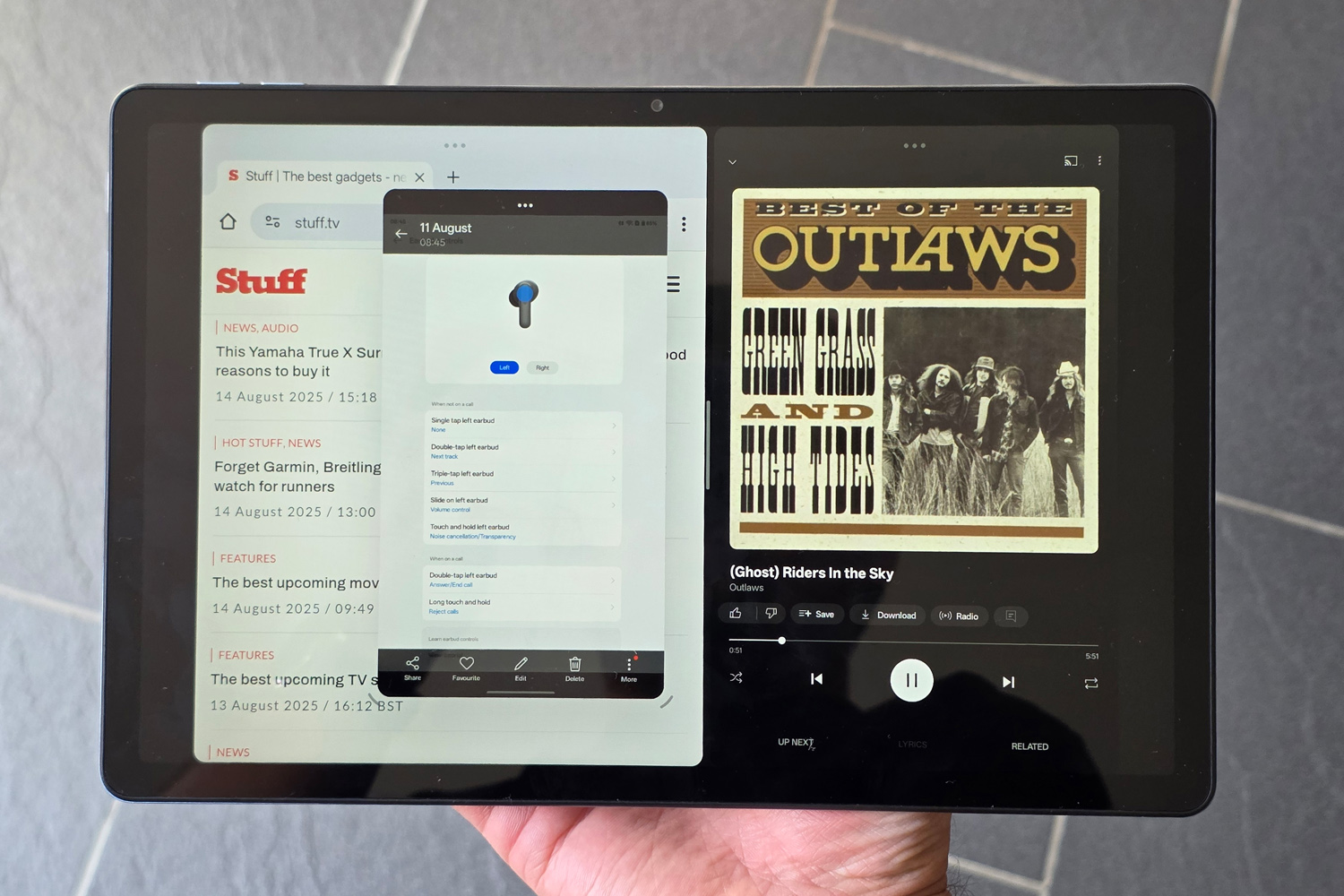
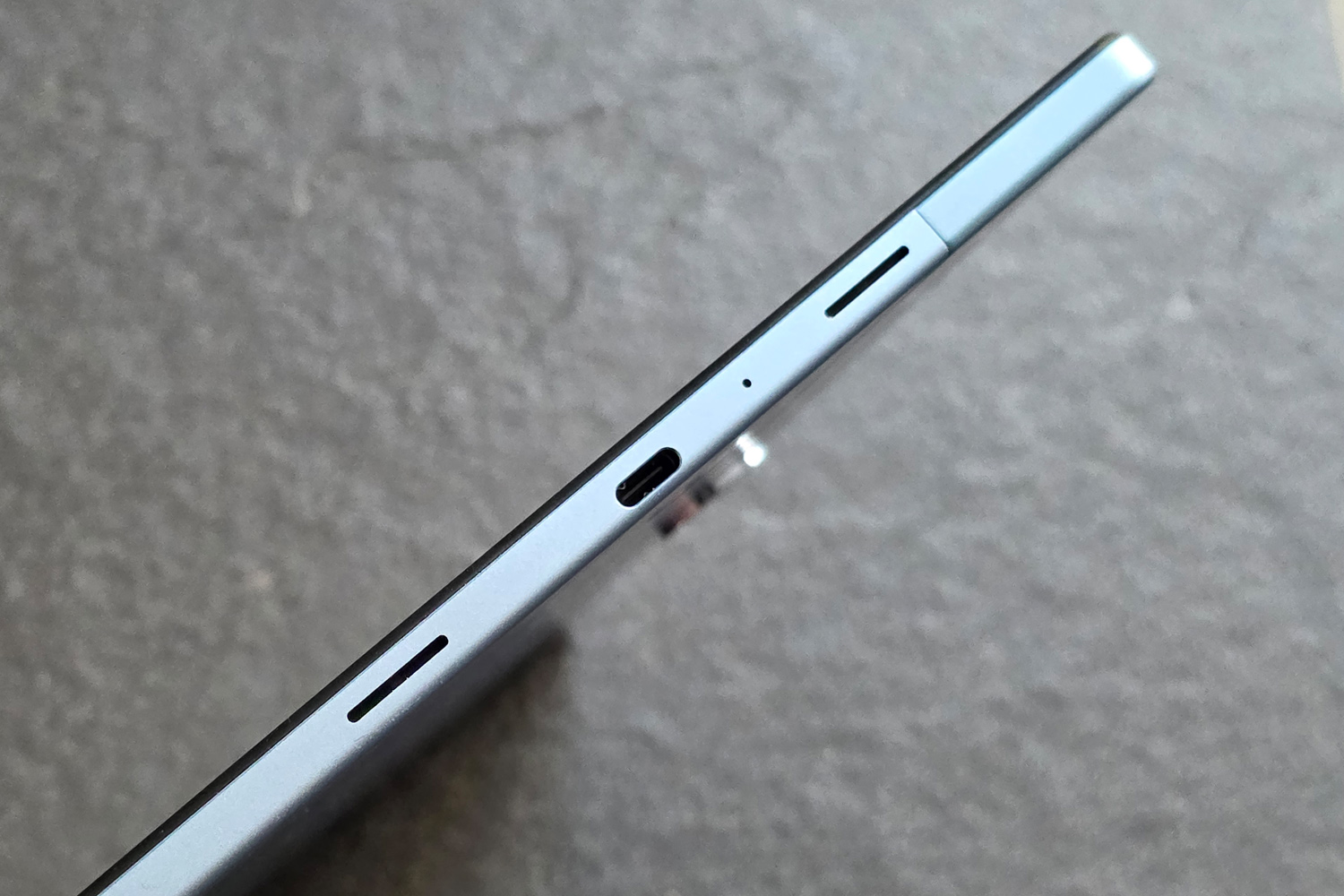
The MediaTek Helio G100 chipset at the heart of the OnePlus Pad Lite is the biggest giveaway this is an affordable tablet. It might have eight CPU cores, but none of ’em have an awful lot of oomph – whether paired with 8GB of RAM, as per my LTE-equipped review unit, or 6GB with the Wi-Fi only version.
It churns through synthetic benchmarks at quite a sluggish pace, and while affordable rivals aren’t exactly any better, it still means this tablet performs best when tasked with one thing at a time. In split-screen mode and with a third floating window, you’re really not getting the snappiest response or smoothest scrolling. That doesn’t entirely defeat the purpose of Open Canvas, but it’s something to think about if you’re after a pure productivity machine.
That said, single app responsiveness is more than good enough for the price, and I didn’t at any point feel hobbled by the hardware for things like web browsing, email or social media scrolling.
| OnePlus Pad Lite benchmark scores | |
| Geekbench 6 single-core | 713 |
| Geekbench 6 multi-core | 1887 |
| Geekbench AI | 902 |
| PCMark Work 3.0 | 8357 |
Gaming in particular can be a struggle, with more demanding titles defaulting to their lowest settings and not always delivering smooth frame rates. Asphalt Legends, not the most taxing game but still quite the looker at maximum settings, felt stuttery even with all the details dropped. My usual 3D benchmarks wouldn’t even run. Stick to casual games, though, and it’ll get the job done.
On the plus side, the modest chipset doesn’t demand a huge amount of juice. When paired with a sizeable 9340mAh battery, the OnePlus Pad is able to go the distance with a full day of video streaming and web browsing. I had no trouble starting in the morning with a full charge, and with pretty much constant use I was still comfortably out of Battery Saver range at bedtime. Even better, standby time on this tablet is excellent. OnePlus reckons it’ll last 54 days in isolation before finally croaking, and in real-world use that means only needing to plug in once every week if you’re an occasional user.
30W wired charging isn’t the fastest, especially as you’ll need to supply your own power brick – and one that’s compatible with OnePlus’ SuperVOOC tech at that.
OnePlus Pad Lite verdict
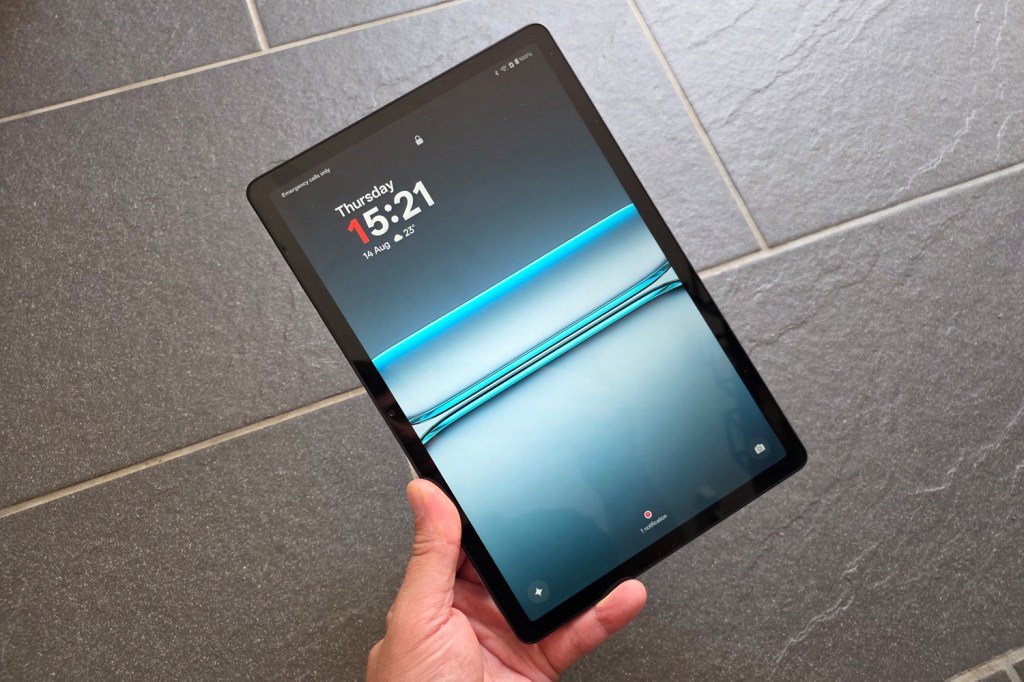
The Pad Lite makes a strong case for itself with excellent battery life and build that feels anything but basic. While you don’t have to spend a huge amount more to get a tablet with a more powerful processor or higher pixel count screen, few of ’em have software as stripped back as OnePlus’s.
I think it’s the ideal first tablet, with no bloatware for mum and dad to strip out, a parental control mode for younger kids, just enough grunt for casual games and multitasking abilities that could come in handy when doing homework.
For everyone else, getting a decent long-term update commitment and LTE connectivity for sensible money carries its own appeal. If you’re trying to keep costs down, this is a great starting point.
Stuff Says…
Performance might be modest, but the OnePlus Pad Lite is otherwise a well-rounded tablet at a very appealing price.
Pros
Big screen with smooth scrolling
Long-lasting battery, particularly on standby
Clean take on Android with useful multitasking
Cons
Lacks the oomph of pricier tabs
Not the sharpest or brightest budget tablet display
A little on the heavy side, funnily enough
OnePlus Pad Lite technical specifications
| Screen | 11in, 1920×1200 LCD w/ 90Hz |
| CPU | MediaTek Helio G100 |
| Memory | 6/8GB RAM |
| Cameras | 5MP rear 5MP front |
| Storage | 128GB on-board |
| Operating system | Android 15 |
| Battery | 9340mAh w/ 33W wired charging |
| Dimensions | 255x167x7.4mm, 530g |

